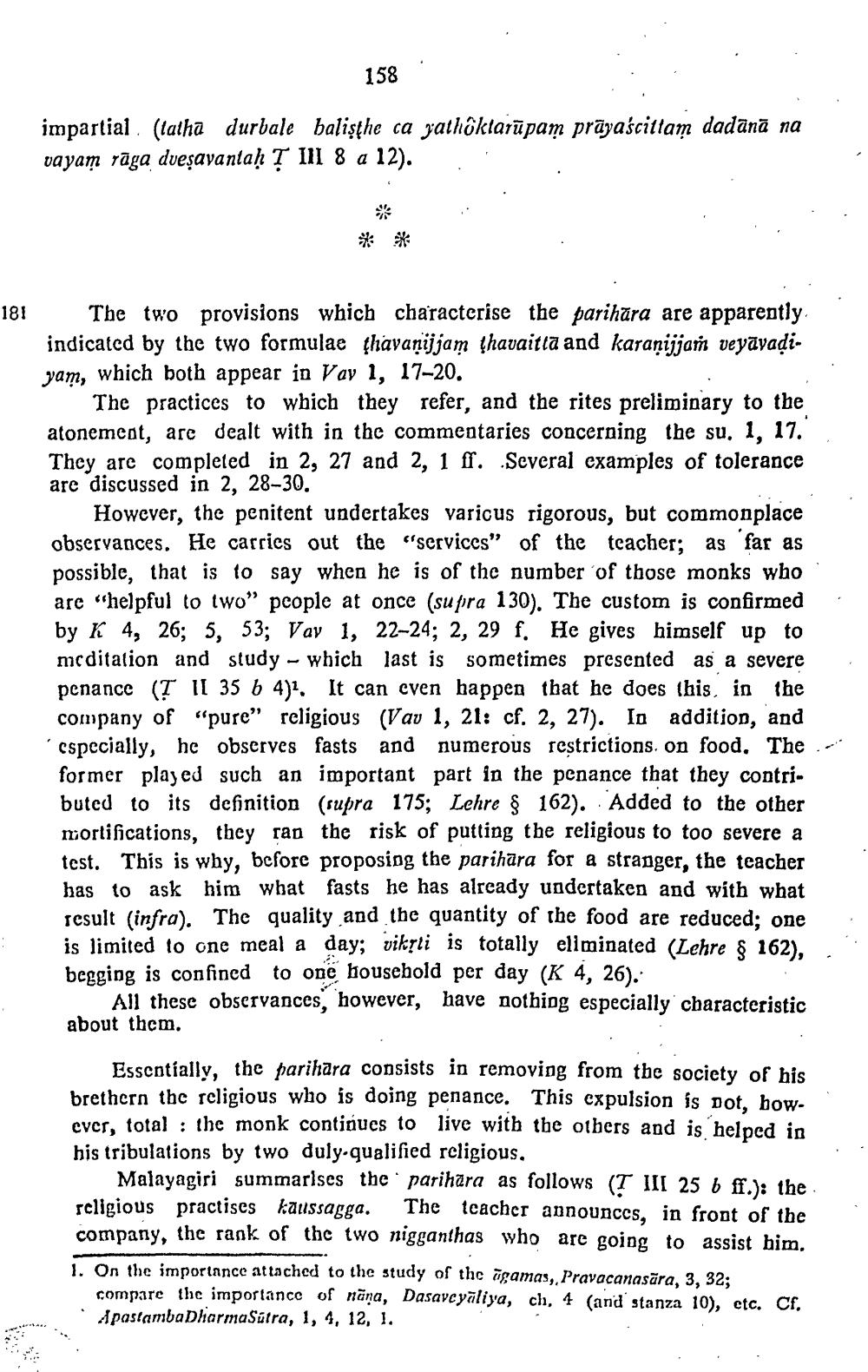________________
158
impartial (latha durbale balişthe ca rathôklarūpam prāyaścittam dadānā na vayam rāga dveşavantaḥ ? III 8 a 12).
181
The two provisions which characterise the parihara are apparently. indicated by the two formulae thavanijjam ghavaitta and karanijjam veyavadiyam, which both appear in Vay 1, 17-20.
The practices to which they refer, and the rites preliminary to the atonement, are dealt with in the commentaries concerning the su, 1, 17. They are completed in 2, 27 and 2, 1 ff. Several examples of tolerance are discussed in 2, 28-30.
However, the penitent undertakes varicus rigorous, but commonplace observances. He carries out the "services" of the teacher; as far as possible, that is to say when he is of the number of those monks who are "helpful to two” people at once (supira 130). The custom is confirmed by K 4, 26; 5,53; Vay 1, 22-24; 2, 29 f. He gives himself up to meditation and study - which last is sometimes presented as a severe penance (T II 35 b 4). It can cven happen that he does this, in the company of "pure” religious (Vav 1, 21: cf. 2, 27). In addition, and cspecially, he observes fasts and numerous restrictions on food. The former played such an important part in the penance that they contributed to its definition (supra 175; Lehre § 162). Added to the other mortifications, they ran the risk of putting the religious to too severe a test. This is why, before proposing the parihara for a stranger, the teacher has to ask him what fasts he has already undertaken and with what result (infra). The quality and the quantity of the food are reduced; one is limited to one meal a day; vikrli is totally eliminated (Lehre $ 162), begging is confined to one household per day (K 4, 26).
All these observances, however, have nothing especially characteristic about thcm.
Essentially, the parihara consists in removing from the society of his brethern the religious who is doing penance. This cxpulsion is not, bowcvcr, total : the monk continues to live with the others and is helped in his tribulations by two duly qualified rcligious,
Malayagiri summarises the parihara as follows (T III 25 6 ff.): the rcligious practises kaussagga. The teacher announces, in front of the company, the rank of the two nigganthas who are going to assist him, 1. On the importance attached to the study of the ügamas, Pravacanasära, 3, 32;
compare the importance of nāna, Dasavcyāliya, ch, 4 (and stanza 10), etc. Cf. Apastamba DharmaSutra, 1, 4, 12, 1.




